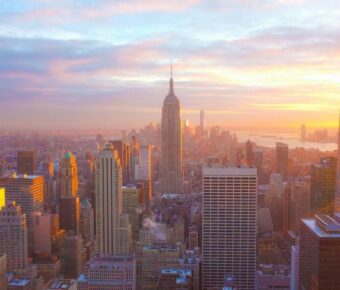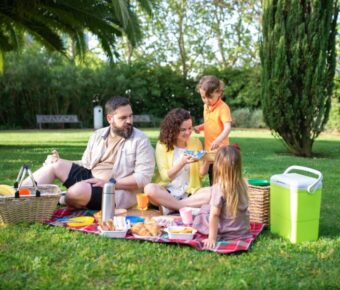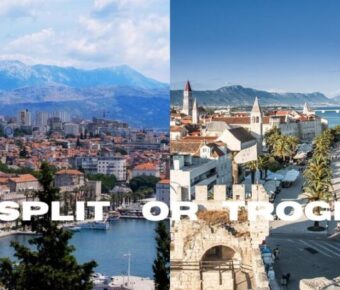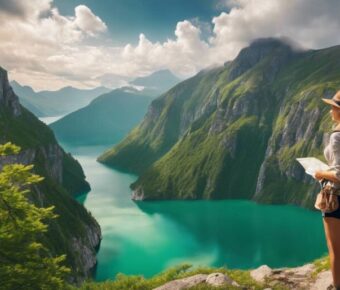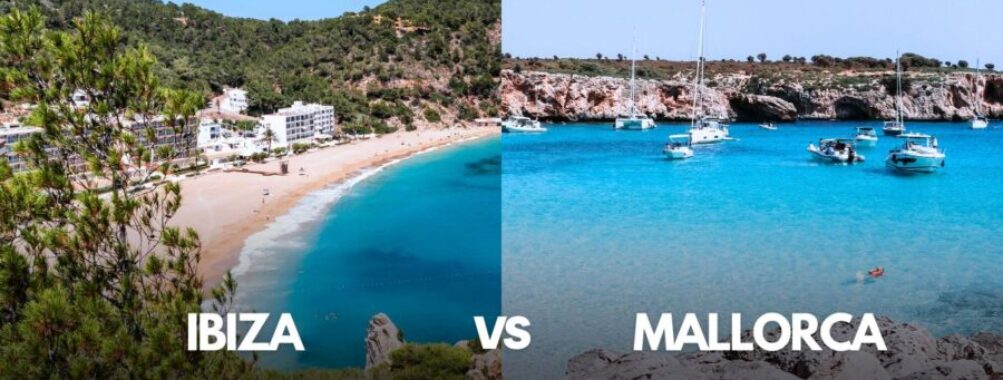
Ibiza vs Mallorca: Key Differences to Know Before Booking Your 2025 Mediterranean Escape
Are you looking to choose between Ibiza and Mallorca for your next Balearic Islands getaway? These Spanish Mediterranean gems offer unique experiences despite being neighbors.
Mallorca is the larger island with a more year-round tourist season, while Ibiza packs tremendous fun into a smaller package with a summer-focused season. The difference in size means Mallorca offers more diversity in landscapes and experiences, from traditional Spanish towns to beautiful beaches.
Ibiza has earned its reputation as the party capital with its world-class clubs and music scenes. But don’t be fooled by stereotypes—both islands offer relaxation opportunities.
Mallorca tends to balance partying with relaxation, while Menorca (its quieter neighbor) focuses primarily on relaxation. Your perfect choice depends on whether you prioritize nightlife, traditional culture, or finding that sweet spot between excitement and calm.
Table of Contents
- Geography and Accessibility
- Ibiza’s Island Features
- Mallorca’s Landscape
- Cultural Highlights and History
- Ibiza’s UNESCO-Protected Eivissa Town
- Mallorca’s Historical Palma de Mallorca
- Beach and Coastal Life
- Ibiza’s Calas and Beach Seats
- Mallorca’s Sandy Shores
- Nightlife and Entertainment
- Ibiza’s Legendary Clubs
- Mallorca’s Diverse Nightlife
- Local Cuisine and Gastronomy
- Savoring Ibiza: Guisat de Peix and More
- Mallorca’s Dishes: Ensaïmada and Seafood
- Outdoor Activities and Nature Explorations
- Hiking Trails in Ibiza
- Mallorca’s Natural Landscapes
- Accommodations and Hospitality
- Staying in Style: Ibiza’s Lodging Choices
- Mallorca’s Accommodation Range
- Retail Therapy and Local Craftsmanship
- Ibiza’s Markets and Designer Boutiques
- Mallorca’s Artisanal Shops and Pearls
- Event Calendar: Festivals and Seasonal Highlights
- Ibiza’s Festive Atmosphere
- Celebrating Mallorca’s Traditions
- Frequently Asked Questions
- What are the distinctive nightlife experiences between Ibiza and Mallorca?
- Can you compare the family holiday experiences in Ibiza versus Mallorca?
- How do beach experiences differ on the islands of Ibiza and Mallorca?
- Which island, Ibiza or Mallorca, offers a more cost-effective vacation?
- Are the climate and weather conditions significantly different when comparing Ibiza to Mallorca?
- Beyond the hype, does Mallorca offer unique attractions that set it apart from Ibiza?
- Book Your Dream Experience
- More Travel Guides
Geography and Accessibility
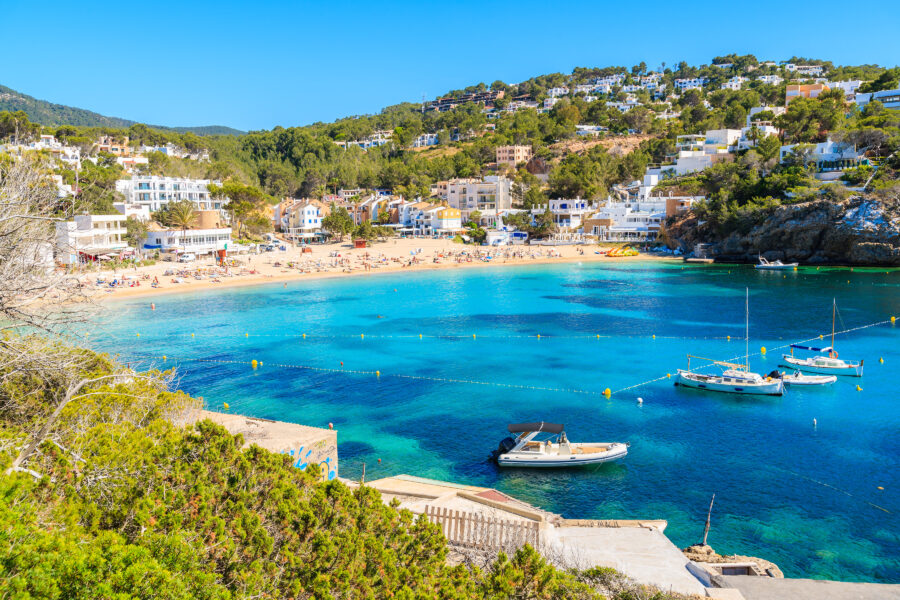
The Balearic Islands offer distinctly different geographical experiences. Ibiza is much smaller and more compact than Mallorca, making exploring easier, while Mallorca boasts more diverse landscapes and year-round accessibility.
Ibiza’s Island Features
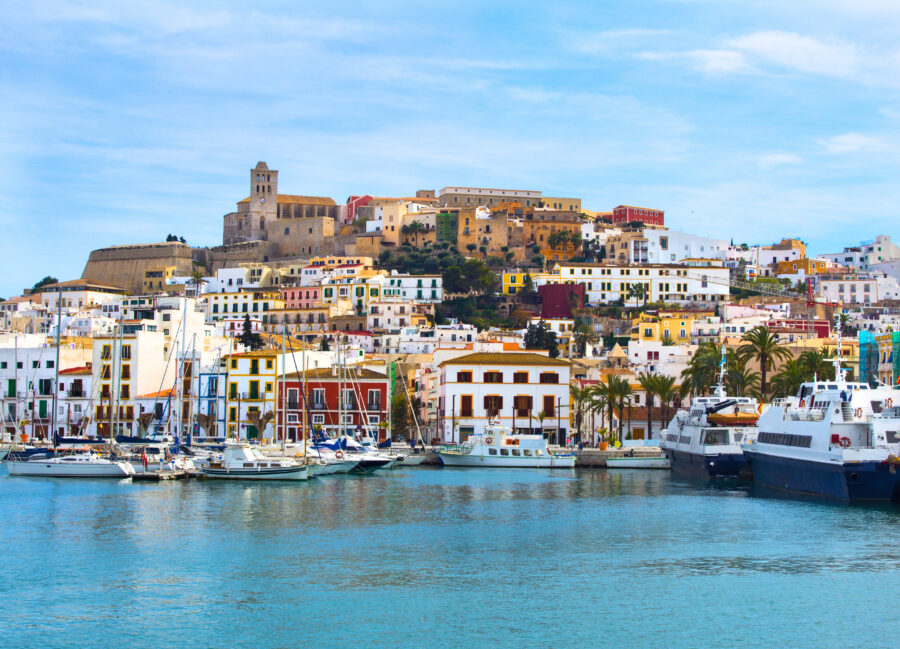
Ibiza packs a lot into its modest 571 square kilometers (220 square miles), making it the third-largest island in the Balearic archipelago. The island’s compact size is one of its advantages—you can drive from one end to the other in about an hour.
Despite being smaller, Ibiza offers varied terrain with rolling hills, pine forests, and hidden coves. The coastline alternates between rocky outcrops and small, sandy beaches tucked into coves. Most tourist activity centers around the south and west coasts.
The tourist season in Ibiza is primarily summer-focused, with many businesses closing during winter. This creates a more pronounced on/off-season dynamic than its larger neighbor.
Mallorca’s Landscape
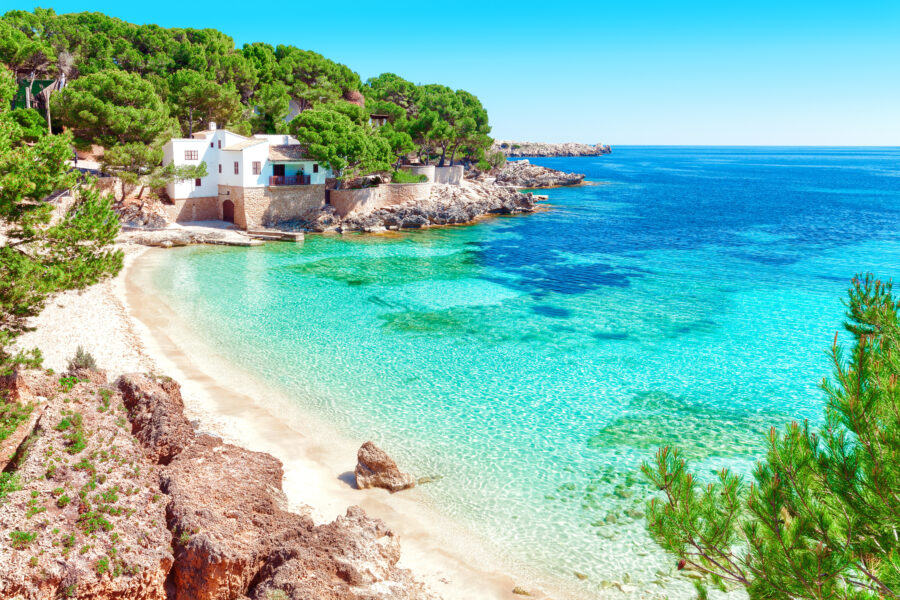
Mallorca is considerably larger—more than twice the size of Ibiza—and boasts a much more diverse geography. Its standout feature is the impressive Sierra del Norte mountain range in the northwest, which dramatically rises from the sea and creates stunning landscapes.
The island offers greater geographical variety, with mountains, valleys, extensive plains, rocky coves, and long, sandy beaches. This diversity means visitors can experience everything from mountain hiking to beachside relaxation.
Unlike Ibiza, Mallorca has developed a year-round tourist industry. Its infrastructure is more extensive, with better road networks and public transportation options connecting different island parts.
This makes exploring Mallorca’s varied terrain easier throughout all seasons. Many travelers find Mallorca’s size provides more options for long-term stays or repeated visits, as there’s more to discover.
Cultural Highlights and History
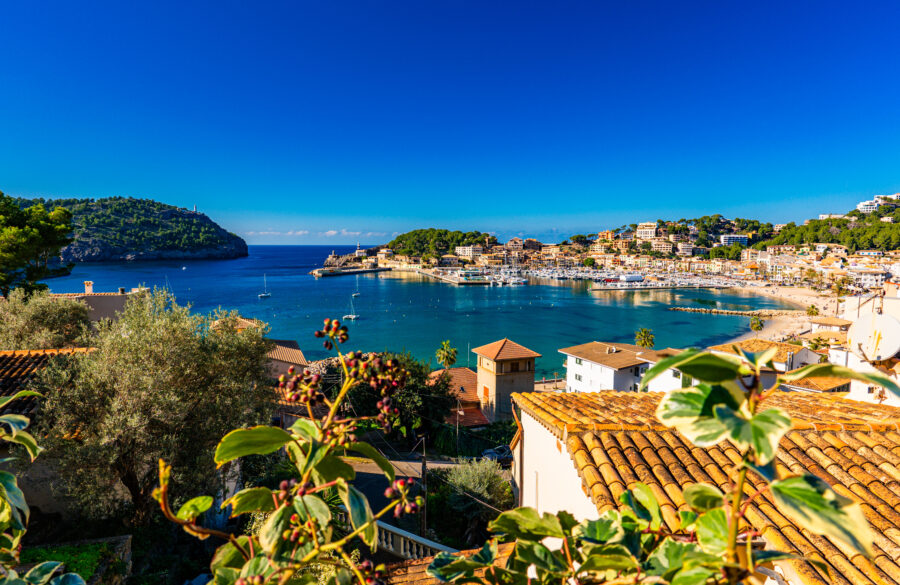
Both islands boast rich cultural traditions that reflect their Mediterranean roots and historic importance. Ibiza and Mallorca each offer visitors unique glimpses into Spanish history through well-preserved architecture, museums, and local customs.
Ibiza’s UNESCO-Protected Eivissa Town

Ibiza’s crown jewel is Eivissa Town (Ibiza Town), with its UNESCO-protected Old Town known locally as Dalt Vila. This impressive walled fortress sits on a hill overlooking the harbor, with massive Renaissance walls dating back to the 16th century.
Walking through the cobblestone streets, you’ll discover whitewashed buildings, charming cafes, and the 14th-century Cathedral of Our Lady of the Snows. The archaeological museum houses Phoenician artifacts that tell the story of the island’s earliest settlers.
The town represents a blend of cultures that shaped Ibiza – Phoenician, Carthaginian, Roman, and Moorish influences are visible throughout. The fortifications were built to protect against Ottoman pirates, and today the seven bastions offer spectacular views of the Mediterranean.
Mallorca’s Historical Palma de Mallorca
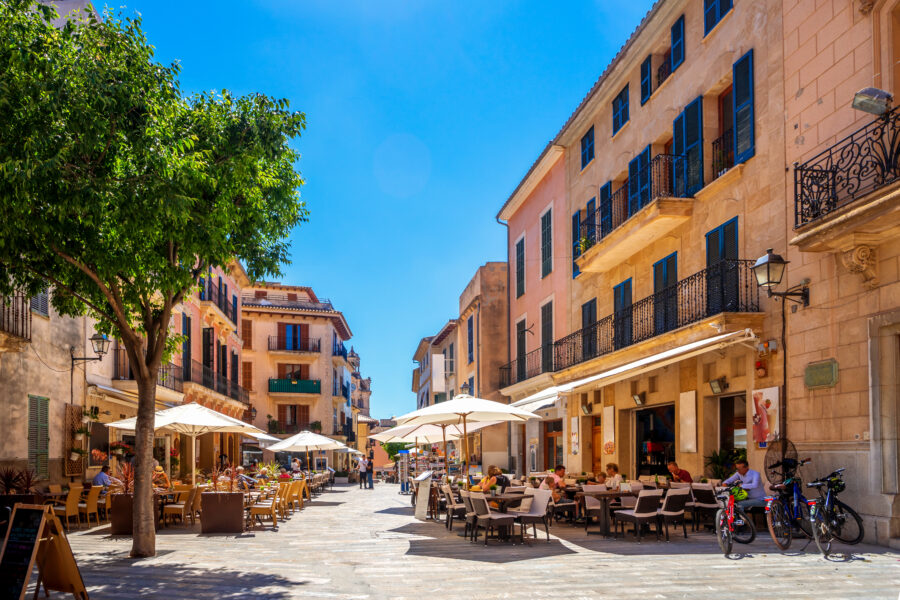
Palma de Mallorca is the island’s cultural center, dominated by the stunning Gothic La Seu Cathedral. This massive structure, which took nearly 400 years to complete, sits majestically along the bay. Its famous rose window, one of the largest in the world, casts colorful light across the interior.
The historic quarter features narrow medieval streets leading to hidden courtyards and palaces with typical Mallorcan patios. The Arab Baths remain one of the few reminders of Moorish rule.
Just outside Palma, the village of Valldemossa offers cultural excursions to the monastery where composer Frédéric Chopin and writer George Sand spent a winter. The charming stone buildings and mountain setting have inspired artists for generations.
Once an Islamic fort, the Royal Palace of La Almudaina now serves as the official residence of the Spanish royal family when visiting the island.
See Related: Where to Stay in Ibiza: Top Areas and Hotels for Every Budget
Beach and Coastal Life

Both islands offer stunning Mediterranean coastlines, but each has its unique coastal character. Ibiza’s beaches tend to be smaller with crystal-clear waters, while Mallorca boasts longer stretches of sandy shores and more variety in beach types.
Ibiza’s Calas and Beach Seats

Ibiza may be smaller than Mallorca, but it packs an impressive punch when it comes to beaches. The island is famous for its calas – small, secluded coves often surrounded by pine-covered cliffs. In the south, Las Salinas is one of the most popular beaches with soft white sand and crystal-clear waters.
What makes Ibiza’s beaches special is their diversity. You’ll find everything from party beaches with thumping music to hidden spots where you can escape the crowds. Many beaches have a bohemian vibe that reflects the island’s free-spirited culture.
For those seeking privacy, Ibiza offers several nude beaches tucked away in more remote areas. The water quality is exceptional throughout the island, with visibility often extending several meters below the surface, perfect for snorkeling or simply admiring the seabed.
Mallorca’s Sandy Shores

Mallorca’s larger size means it offers more beaches – over 200 along its 550km coastline. Unlike Ibiza’s smaller coves, Mallorca features longer stretches of sand, particularly on its northern and eastern shores.
The variety is impressive. You’ll find family-friendly beaches with shallow waters and amenities, wild and unspoiled natural beaches, and buzzing resort beaches lined with restaurants and water sports facilities. Many beaches in Mallorca have earned Blue Flag status for their cleanliness and water quality.
The island’s size also means you can find secluded spots even in high season if you venture away from the main tourist areas. The beaches around Formentor and Alcúdia are particularly stunning, with fine white sand and turquoise waters that rival any Caribbean destination.
Mallorca’s beaches also tend to be more accessible than Ibiza’s hidden calas, making them more convenient for families and those with mobility issues.
Nightlife and Entertainment

When compared, these two Spanish islands offer completely different after-dark scenes. Ibiza is world-famous for its legendary clubs and electronic music, while Mallorca provides a more varied nightlife experience that caters to different tastes and ages.
Ibiza’s Legendary Clubs
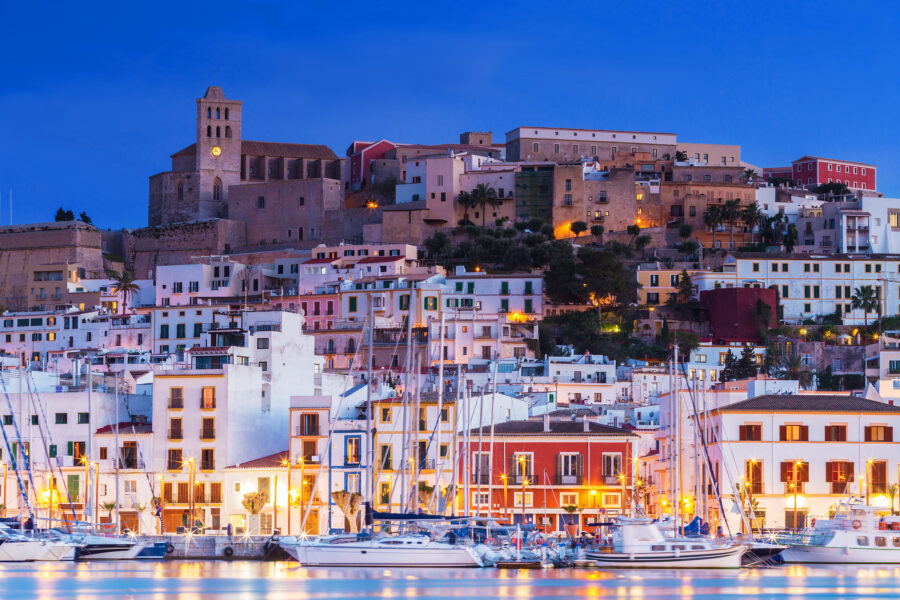
Ibiza has earned its reputation as the global party capital. The island’s nightclub scene is unmatched, with world-class venues like Pacha, which has been pumping out beats since 1973. This iconic club attracts top international DJs every summer season.
Ushuaïa Beach Hotel combines daytime pool parties with evening open-air concerts, creating an experience that begins in the afternoon and continues until sunrise. The venue regularly hosts big names in electronic music who perform to thousands of dancing fans.
For a different vibe, Café del Mar offers the famous sunset experience. Visitors gather to watch the sun sink into the Mediterranean while listening to ambient music. The sunset ritual has become almost spiritual for many travelers.
Mallorca’s Diverse Nightlife
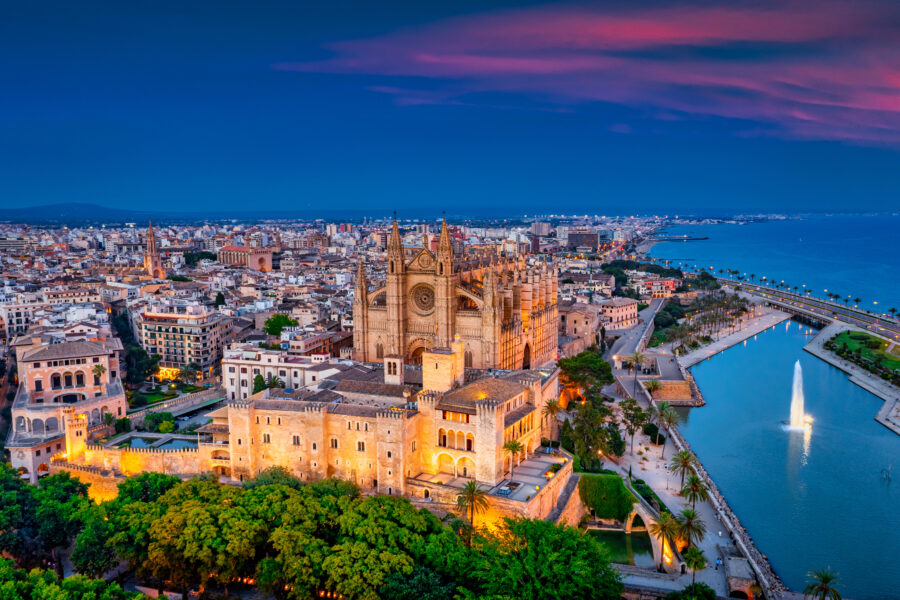
Mallorca offers a more varied nightlife that isn’t solely focused on electronic music. The island’s capital, Palma, features sophisticated cocktail bars, jazz clubs, and casual pubs alongside its dance venues.
Magaluf is Mallorca’s answer to Ibiza’s party scene. Its strip of clubs and bars attracts a younger crowd, but the atmosphere is generally more relaxed than Ibiza’s high-energy clubs.
For those seeking something different, Mallorca provides evening entertainment like flamenco shows, outdoor concerts, and beachfront restaurants that transform into mellow lounges at night. Many resorts organize evening entertainment programs, making it easy for families and couples to enjoy music and performances without leaving their accommodations.
Local Cuisine and Gastronomy
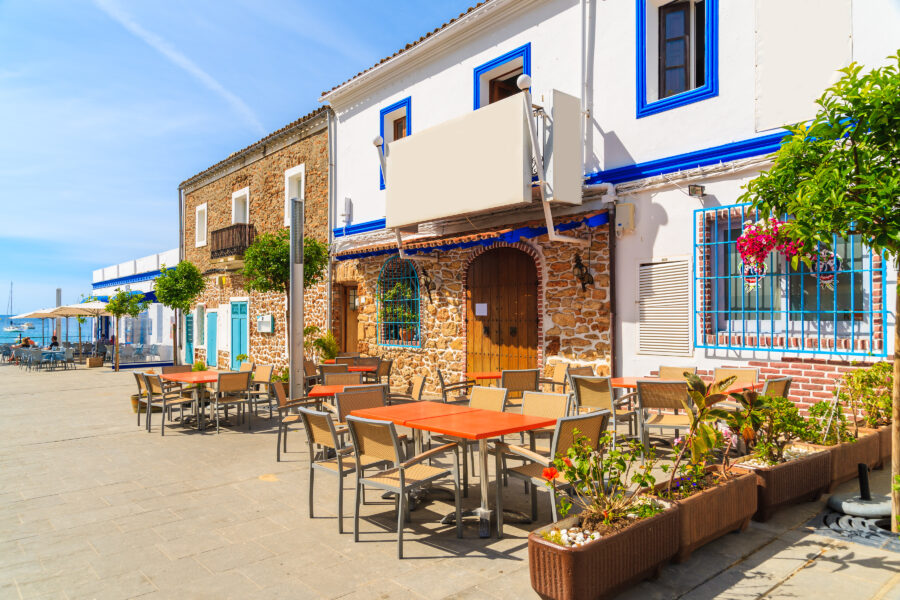
Both islands offer amazing food experiences that reflect their Mediterranean heritage and use fresh local ingredients. The culinary scenes in Ibiza and Mallorca showcase unique island flavors while maintaining connections to traditional Spanish cooking.
Savoring Ibiza: Guisat de Peix and More

Ibiza’s food scene rivals mainland Spain’s culinary capitals, though it doesn’t always get the same attention. The island’s signature dish is Guisat de Peix, a hearty fish stew made with various local catches and potatoes in a flavorful saffron broth. This dish perfectly represents Ibiza’s connection to the sea.
Even in touristy areas, Ibiza restaurants maintain high standards. Many visitors are surprised by the quality of food served throughout the island.
Local tapas bars offer patatas bravas and gambas al ajillo (garlic shrimp) with distinctly Ibizan twists. The island also embraces farm-to-table dining, with restaurants featuring organic produce from inland farms.
Seafood is naturally a highlight. Fresh-caught fish like dorada (sea bream) and calamari appear on menus everywhere, often simply grilled with olive oil and lemon.
Mallorca’s Dishes: Ensaïmada and Seafood
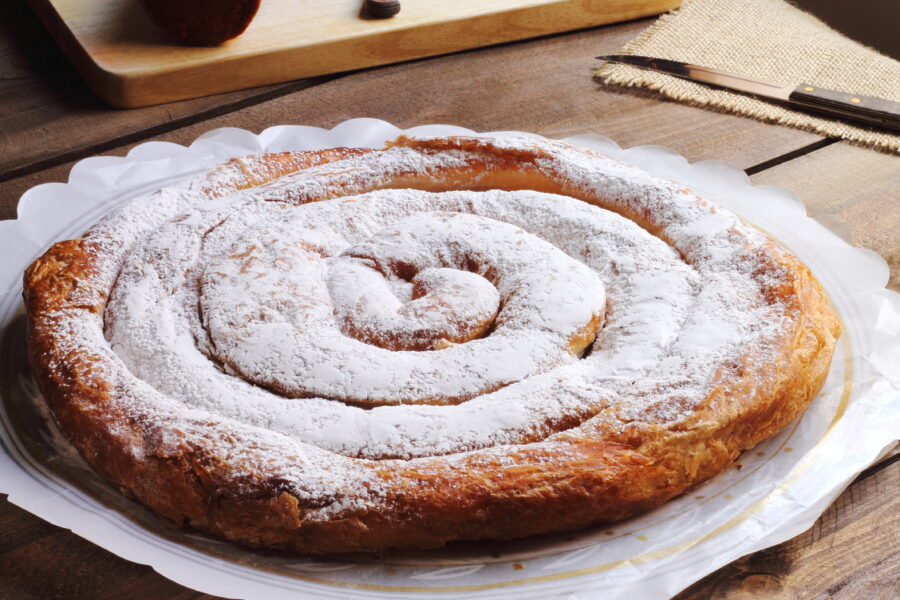
Mallorca boasts a diverse culinary landscape with slightly more affordable prices than Ibiza. The island’s most famous creation is the ensaïmada, a spiral-shaped sweet pastry dusted with powdered sugar. These pastries come plain or filled with cream, chocolate, or sobrasada (spiced sausage).
Seafood dominates Mallorcan menus too. Caldereta de langosta (lobster stew) represents the pinnacle of island luxury dining, while simpler dishes like llampuga amb prebes (mahi-mahi with peppers) showcase local fishing traditions.
Traditional Mallorcan cuisine features hearty dishes like tumbet (layered vegetables similar to ratatouille) and sobrasada (spreadable paprika-spiced sausage) that reflect the island’s agricultural history.
For value-conscious travelers, Mallorca offers excellent tapas experiences at reasonable prices compared to Ibiza. The larger island also means more variety, from beachside chiringuitos to mountainside restaurants serving roasted lamb.
Outdoor Activities and Nature Explorations
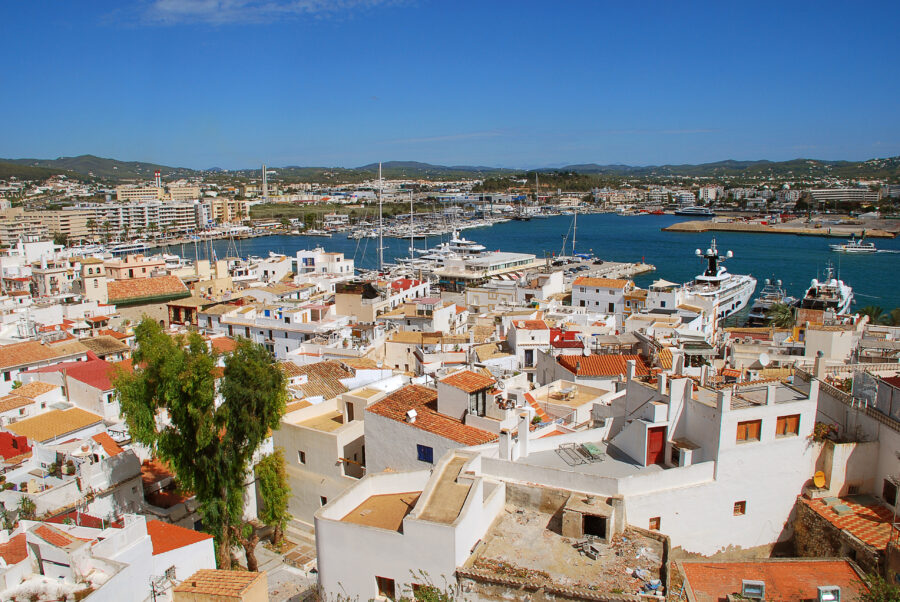
Both Ibiza and Mallorca offer stunning natural environments perfect for outdoor enthusiasts. Each island’s unique landscapes provide different experiences for visitors seeking adventure or peaceful nature encounters.
Hiking Trails in Ibiza

Ibiza isn’t just about parties—it’s home to remarkable hiking paths showcasing the island’s natural beauty. The island’s northern part features rugged coastal trails with breathtaking sea views and hidden coves that most tourists never discover.
Es Vedrà hiking route is one of the most popular trails. It offers spectacular views of the mysterious limestone rock formation rising from the sea. The trail is moderately challenging but rewards hikers with Instagram-worthy panoramas.
For those interested in Ibiza’s wildlife, the pine forests near Santa Eulària provide shaded paths where hikers might spot local bird species and native plants. Many trails connect to the island’s natural mud baths, which are believed to have therapeutic properties.
Mallorca’s Natural Landscapes
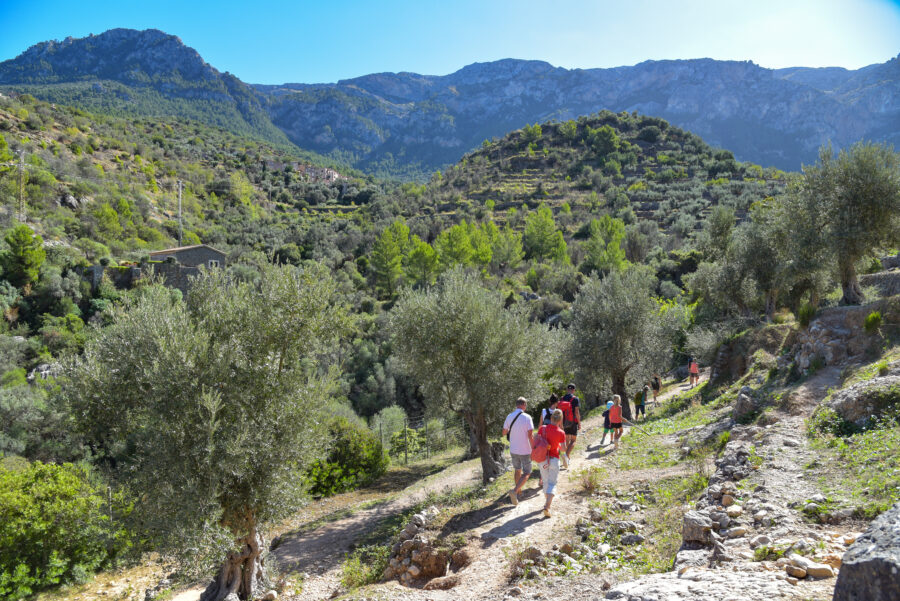
Mallorca boasts more diverse terrains than its sister island, making it a paradise for outdoor activities. The Serra de Tramuntana mountain range, a UNESCO World Heritage site, offers hundreds of marked trails for hikers of all levels.
The dramatic Sa Calobra gorge presents one of the most stunning natural wonders on the island. Visitors can hike through the narrow passage between towering limestone cliffs to reach a beautiful beach where the gorge meets the sea.
Mallorca also caters to golf enthusiasts with over 20 courses set against spectacular backdrops. Tennis facilities are plentiful too, reflecting the island’s connection to Rafael Nadal, who hails from here. For shoppers who still want to connect with nature, La Galeria Elefante in Mallorca offers eco-friendly products made by local artisans using natural materials found on the island.
Accommodations and Hospitality
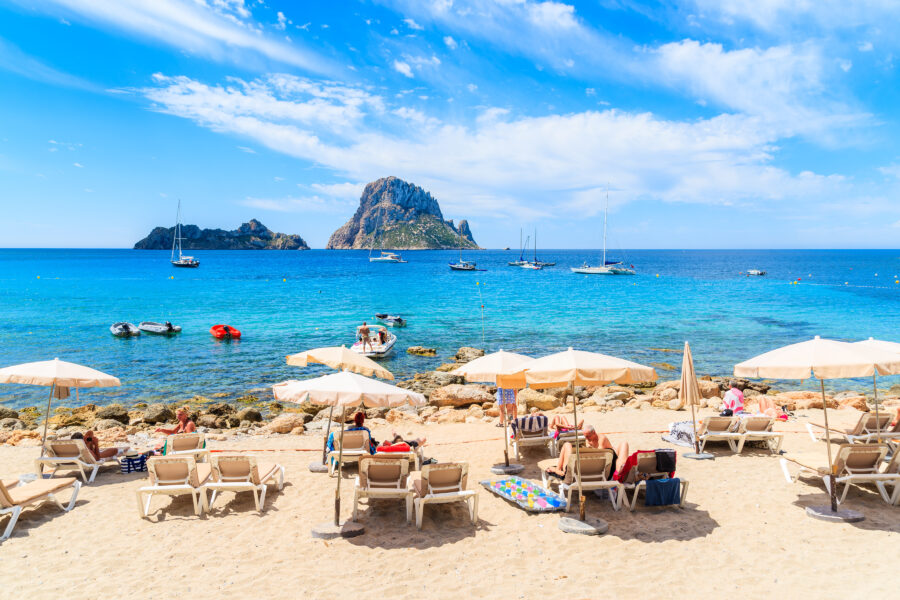
Both islands offer distinctive places to stay that cater to different types of travelers. From party-focused hotels to peaceful family resorts, your accommodation choice can greatly impact your island experience.
Staying in Style: Ibiza’s Lodging Choices
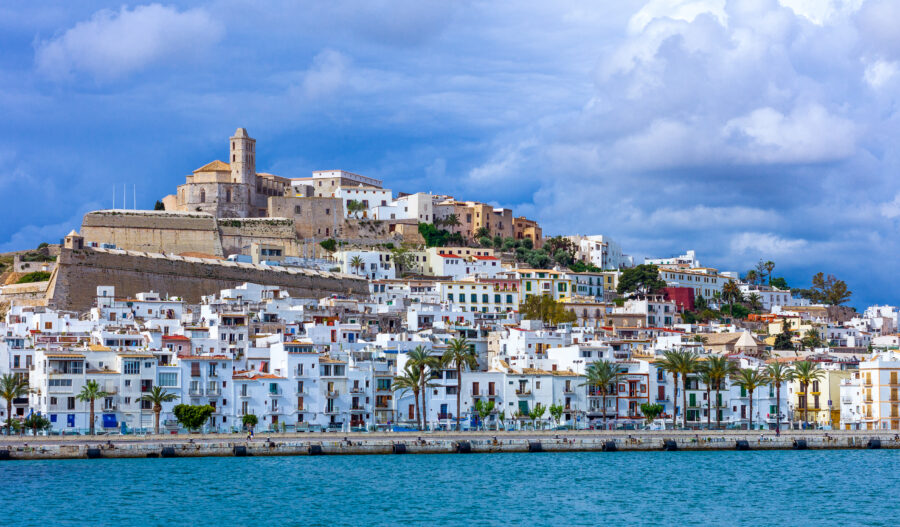
Ibiza’s famous party culture shapes its accommodation scene, but there’s more variety than expected. The iconic Ushuaia Beach Hotel in Playa d’en Bossa is a premier party destination where guests can enjoy world-class DJs from their balconies.
For those seeking luxury without the constant bass, the island has several high-end resorts tucked away in quieter corners. These properties blend Ibizan architecture with modern amenities, offering stunning Mediterranean views.
Families visiting Ibiza can find suitable options in Santa Eulalia and Es Caná, where kid-friendly resorts provide activities and shallow beaches. Many include kids’ clubs and family pools.
Self-catering apartments are abundant near party towns, perfect for groups wanting flexibility and cost savings. A car isn’t necessary if you stay in major areas, as public transport connects most popular spots.
Mallorca’s Accommodation Range
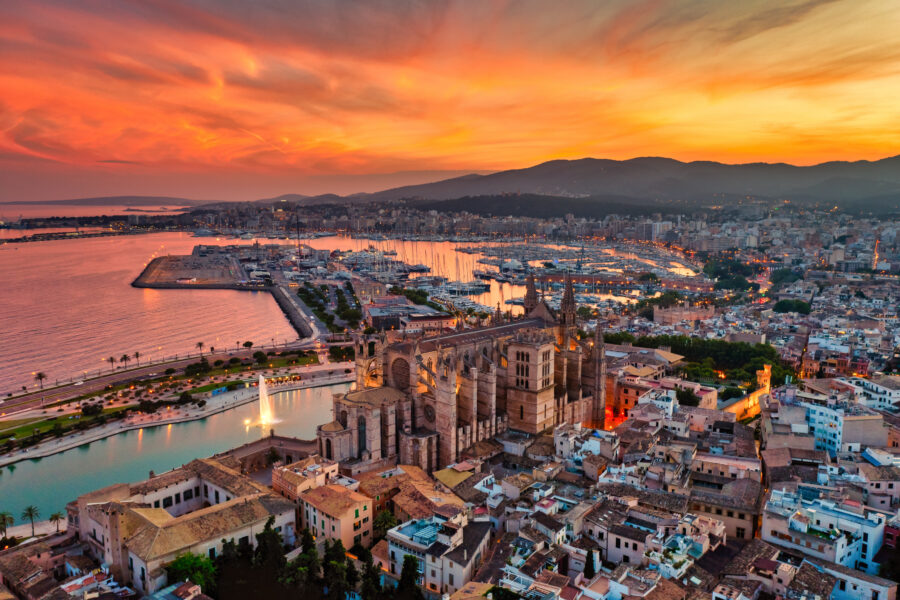
Mallorca boasts a more diverse accommodation landscape than its sister island. The northern region features secluded luxury hotels nestled among olive groves and mountain scenery, though you’ll need a car to explore these remote gems.
Boutique inns have flourished across Mallorca, particularly in historic towns like Palma and Pollença. These charming properties often occupy restored buildings with local character and personalized service.
Family resorts dominate coastal areas such as Alcúdia and Cala Millor, offering all-inclusive packages with extensive facilities. Many feature water parks, kids’ entertainment, and direct beach access.
Mallorca’s luxury segment has expanded significantly, with international brands and local hoteliers creating exceptional properties. These hotels often incorporate local gastronomy and wellness elements that showcase Mallorcan culture.
Property prices tend to be higher in Mallorca, averaging €3,700 per square meter compared to Ibiza’s €3,000, which affects accommodation rates during peak seasons.
See Related: Best Vacation Destinations for Singles Over 40
Retail Therapy and Local Craftsmanship

Both islands offer unique shopping experiences that showcase their distinct personalities. Ibiza embraces bohemian flair and designer labels, while Mallorca excels in traditional crafts and artisanal products.
Ibiza’s Markets and Designer Boutiques
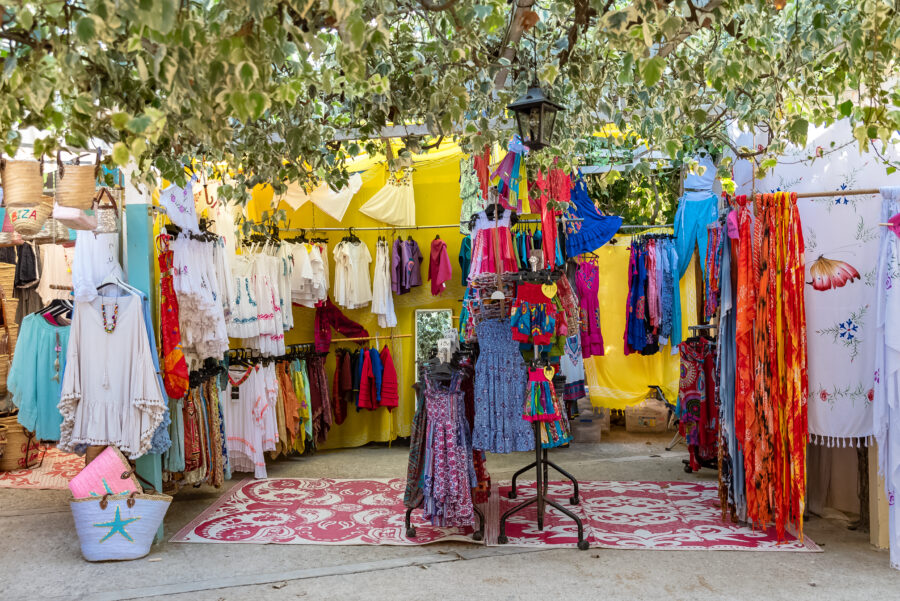
Ibiza’s shopping scene blends hippie-chic markets with upscale boutiques. The Es Canar Hippy Market is a must-visit, running every Wednesday during summer. Here you’ll find handmade jewelry, colorful clothing, and unique accessories from local artisans.
For something more upscale, La Galeria Elefante in Santa Gertrudis showcases bohemian-luxe fashion and home décor. The store supports fair trade practices and works with artisans worldwide.
Ibiza Town’s marina area hosts designer boutiques where you might spot celebrities shopping for the latest fashion. The island’s signature “Adlib” style—white, flowing garments inspired by traditional island dress—can be found in many shops. Don’t miss the night markets in summer, especially in San Carlos and Las Dalias, where shopping under the stars adds to the island’s magical atmosphere.
Mallorca’s Artisanal Shops and Pearls
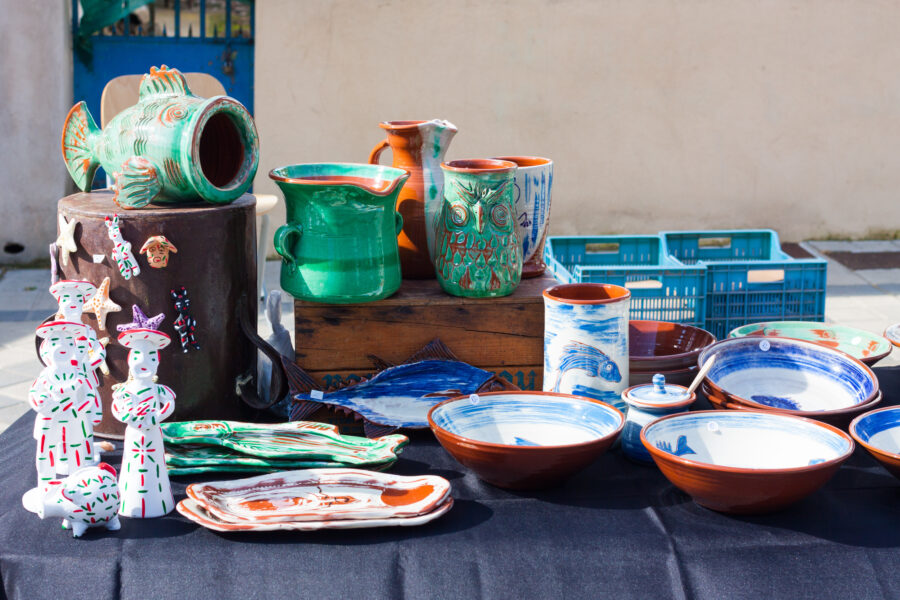
Mallorca takes pride in its craftsmanship traditions, and Majorcan Pearls are the island’s most famous export. Manacor has produced these man-made pearls since the 19th century, and their quality rivals natural ones.
The Mallorca Shop, located across the island, offers authentic pearls alongside other local specialties like handwoven baskets called “senalles” and leather goods. Palma’s old town is perfect for finding unique souvenirs in charming, family-run shops.
Pottery is another Mallorcan specialty, with beautiful ceramics in Pòrtol and Felanitx. The traditional patterns and colors reflect the island’s cultural heritage.
For food lovers, gourmet shops sell local olive oils, sea salt from Es Trenc, and sobrasada—a spreadable spiced sausage unique to Mallorca. Many shops offer shipping services for bulkier items.
Event Calendar: Festivals and Seasonal Highlights
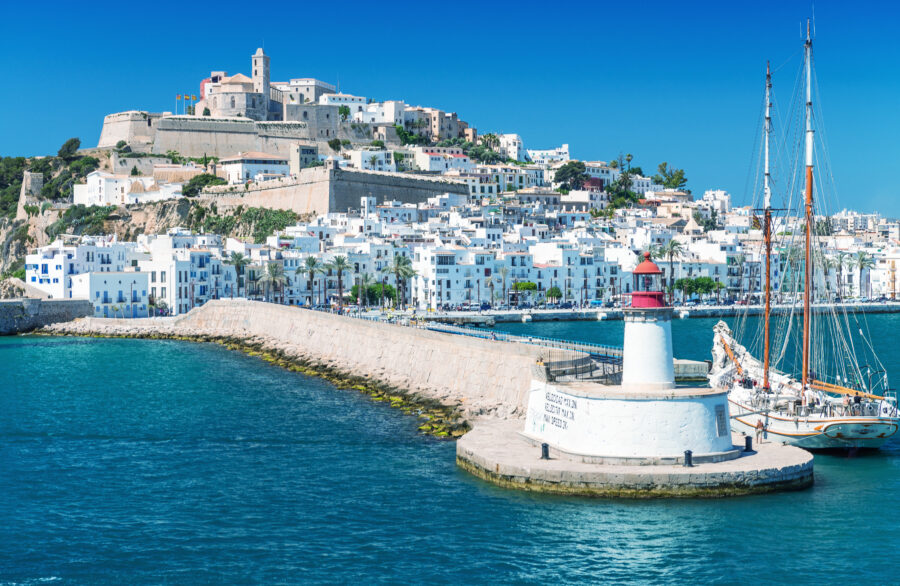
Both islands offer vibrant celebrations throughout the year that showcase their unique cultural heritage and modern entertainment scene. Visitors can plan their trips around these events to experience the islands at their most lively and authentic.
Ibiza’s Festive Atmosphere
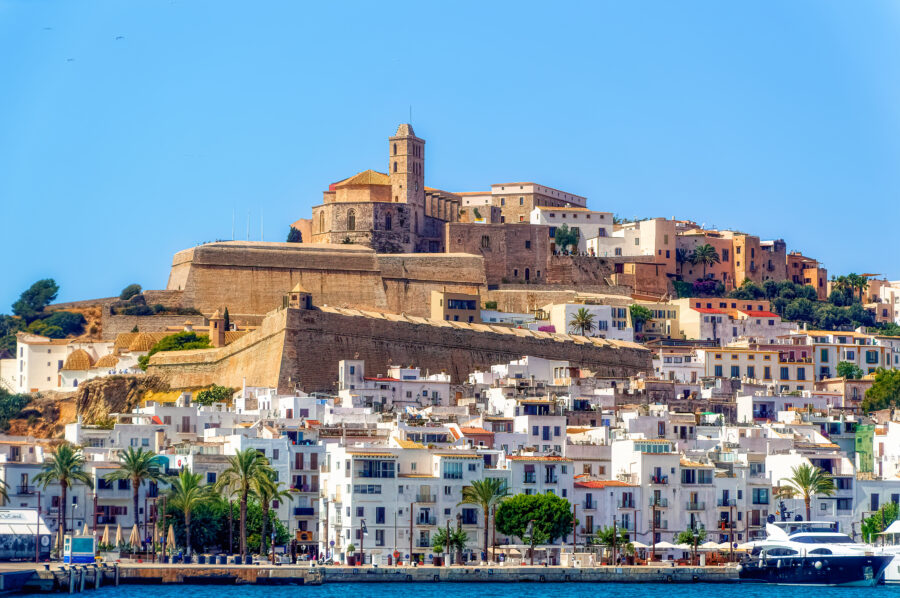
Ibiza’s calendar bursts with exciting events year-round. The island comes alive in summer with world-famous electronic music festivals and club openings drawing thousands of visitors. But there’s more than just the party scene!
May starts with Labor Day celebrations on the 1st, followed by the charming Flower Festival in Santa Eulalia on the first Sunday. History buffs will love the Medieval Festival in Ibiza Town during the second weekend of May.
The Ibiza Global Festival, a free two-day electronic music celebration, lights up San Antonio’s shores in August. This vibrant event has become a must-attend for music lovers.
Local traditions aren’t forgotten either. Throughout the year, villages host their own fiestas patronales honoring their patron saints with processions, live music, and delicious food. These offer a glimpse into authentic Ibizan culture away from the clubs.
Celebrating Mallorca’s Traditions
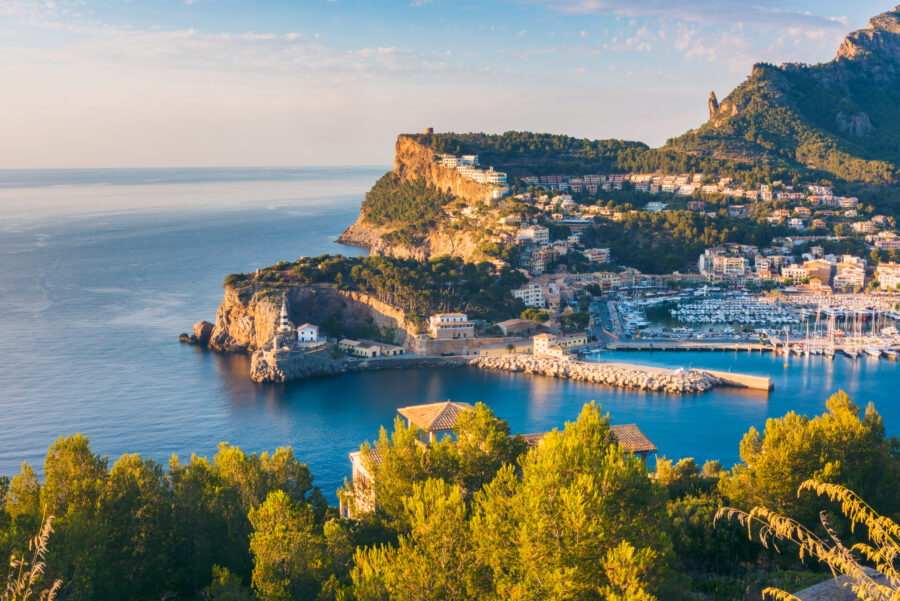
Mallorca’s festival calendar reflects its rich cultural heritage with events that honor ancient customs and modern arts. March is lively with Balearic Islands Day (Dia de les Illes Balears) celebrations across the island.
The Fira del Fang (Pottery Fair) in Marratxi showcases traditional Mallorcan craftsmanship. Visitors can watch artisans at work and purchase unique handmade ceramics as memorable souvenirs.
Summer brings spectacular festivals like Sant Joan in June, which is marked by bonfires and beach parties. The La Patrona festival in Pollença features a mock battle between Moors and Christians, with colorful costumes and dramatic reenactments.
Winter doesn’t slow things down! January’s Sant Antoni celebrations light up the island with bonfires and demon parades. February’s almond blossom season inspires various cultural events celebrating this beautiful natural phenomenon.
See Related: Ibiza vs Mykonos: Key Differences to Know Before Booking Your Mediterranean Island Getaway
Frequently Asked Questions
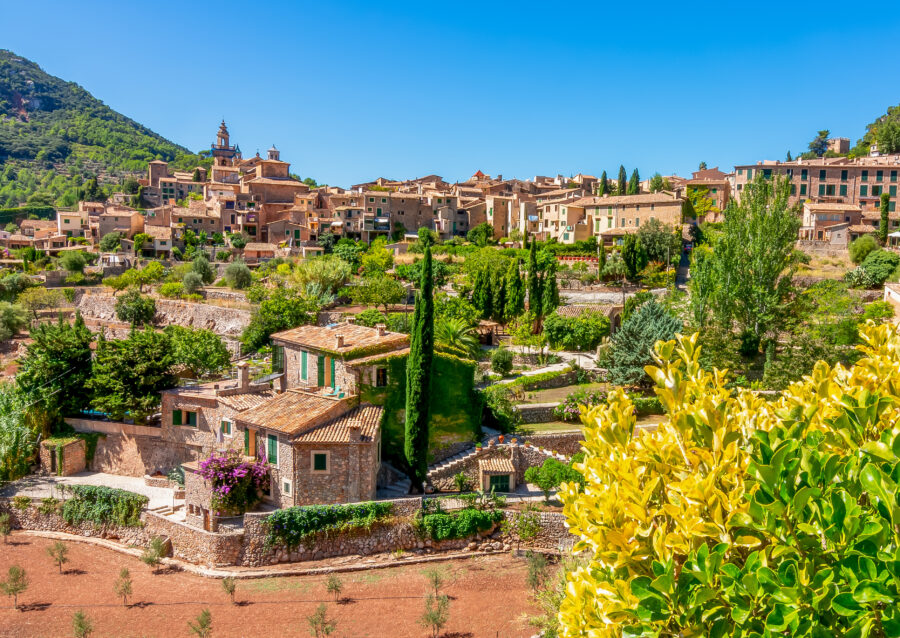
Many travelers find themselves torn between these two Mediterranean gems. Both islands offer distinct vacation experiences with unique beaches, cultures, and atmospheres that appeal to different types of travelers.
What are the distinctive nightlife experiences between Ibiza and Mallorca?
Ibiza has earned its worldwide reputation as the ultimate party destination. The island’s mega-clubs, like Pacha, Amnesia, and Ushuaïa, feature internationally famous DJs and electronic music that keeps the party going until sunrise.
Mallorca offers a more varied nightlife scene. While areas like Magaluf cater to the party crowd, much of the island provides a more laid-back evening experience with beachfront bars and restaurants serving cocktails as the sun sets.
The vibe in Ibiza tends to be more exclusive and intense, while Mallorca provides options for both partying and relaxed evening entertainment.
Can you compare the family holiday experiences in Ibiza versus Mallorca?
Mallorca excels as a family-friendly destination with numerous resorts designed specifically for families. The island boasts water parks, gentle beaches, and kid-friendly attractions throughout its diverse landscape.
Ibiza might surprise people with its family offerings. The northern and eastern parts of the island feature calmer beaches and family-oriented accommodations away from the party scenes.
Mallorca’s larger size means more family-friendly activities and attractions. Its traditional Spanish villages also provide cultural experiences suitable for children and adults alike.
How do beach experiences differ on the islands of Ibiza and Mallorca?
Ibiza’s beaches tend to be smaller but incredibly picturesque with crystal-clear turquoise waters. Coves like Cala Comte and Cala Salada offer intimate beach experiences with stunning natural backdrops.
Mallorca features various beaches, from long stretches of golden sand to hidden rocky coves. The island’s larger size means you’ll find everything from crowded tourist beaches to secluded natural areas.
The water clarity on both islands is excellent, but Ibiza’s smaller size makes it easier to visit multiple beaches in a single day.
Which island, Ibiza or Mallorca, offers a more cost-effective vacation?
Mallorca offers better value for money with its wider accommodation options. The island’s larger size means more competition among restaurants, hotels, and activities, often resulting in better prices.
Ibiza tends to command premium prices, especially during peak season. The island’s reputation for luxury and exclusivity translates to higher costs for accommodations, dining, and nightlife. Budget travelers can find affordable options on both islands by traveling during the shoulder seasons (May-June or September-October), when prices drop but the weather remains pleasant.
Are the climate and weather conditions significantly different when comparing Ibiza to Mallorca?
Both islands enjoy a typical Mediterranean climate with hot, dry summers and mild winters. Peak summer temperatures typically range from 26-30°C (79-86°F) on both islands.
Mallorca’s northern mountain regions can experience slightly cooler temperatures and more rainfall than Ibiza. These mountains also create microclimates across the island. The swimming season is somewhat longer in Ibiza, with comfortable sea temperatures often lasting from May through October.
Beyond the hype, does Mallorca offer unique attractions that set it apart from Ibiza?
Mallorca’s dramatic mountain ranges in the north, particularly the Serra de Tramuntana, offer breathtaking scenery and hiking trails that Ibiza simply can’t match. These mountains are recognized as a UNESCO World Heritage site.
The island’s capital, Palma de Mallorca, boasts impressive historic architecture, including a stunning Gothic cathedral. The city offers sophisticated shopping, dining, and cultural experiences.
Mallorca’s traditional inland villages like Valldemossa and Sóller provide authentic Spanish experiences far removed from tourist areas. These charming towns showcase the island’s rich cultural heritage and traditional way of life.
